
This post is prepared for the benefit of Pharmacy students of homoeopathy who are going to appear in university examinations. This post contains almost all the topics along with their most important and frequently asked questions from different Indian university examinations.
The topics covered are on the basis of syllabus of B.H.M.S. (Degree course) applicable from the academic session 2015-2016, as per the guidelines of Central council of homoeopathy.
Read the whole First BHMS syllabus.
All the questions are given under their related chapters.
Theory examination
Number of paper – 01
Marks: 100
- FQ: Full Question
- SFQ: Semi Full Question
- SN: Short Note
Read the whole Exam pattern of BHMS.
Table of Contents
ToggleHOMOEOPATHIC PHARMACY
1.History of Medicine
- FQ: Write down the history and development of homoeopathic pharmacy.
- FQ: Write down the history of medicine in detail.
- SN: History of homoeopathic pharmacy.
2. Pharmacy and Pharmacopoeia
- FQ: What is pharmacopoeia? Write down different homoeopathic pharmacopoeia in detail.
- FQ: What is pharmacy? What are the branches of homoeopathic pharmacy? Write down the sources of homoeopathic pharmacy in detail.
- FQ: What is pharmacy? What are the sources of homoeopathic pharmacy? Write down vegetable/animal kingdom in detail (All the sources are important).
- SN: American homoeopathic pharmacopoeia/ H.P.U.S.
- SN: Homoeopathic pharmacopoeia of India.
- SN: Imponderabilia.
- SN: Pharmacist
- SN: Sarcodes and Nosodes
- SN: What are the branches of homoeopathic pharmacy?
- SN: Write down the difference between pharmacy and pharmacopoeia.
3. Pharmacology
- FQ: Define pharmacology. What are the branches of it? Write down the methods that determine disease producing power of drug substances.
- SFQ: Pharmacodynamics of homoeopathic remedies.
4. Collection and preservation of drug substances
- FQ: How will you preserve the drug substances?
- FQ: What are the general and specific rules for collecting of Animal drug substances?
- FQ: What are the general and specific rules for collecting of Vegetable drug substances?
- SN: Collection of Nosodes and Sarcodes.
- SN: General rules of collection and preservation of drug substances.
- SN: Preservation of potentised medicine.
5. Constituents in plant substances
- FQ: Write down different methods of drug standardisation.
- SN: Examination of moisture content of plant.
- SN: Quantitative determination of Alcohol in homoeopathic preparations.
- SN: What are the standards of finished preparation?
6. Vehicles
- FQ: Alcohol-Properties, preparation, preservation, dispensing and standardization in detail.
- FQ: Rectified spirit- Its preparation and its conversion into pure alcohol in detail.
- FQ: What is placebo? Its utility and Hahnemann’s view regarding placebo.
- FQ: What is sugar of milk? Write down its physical and chemical characteristics, preparation, uses and standardisation of sugar of milk.
- FQ: Write down Aqua distillate in detail.
- FQ: Write down solid vehicles in detail.
- SN: An ideal vehicle
- SN: Cane sugar
- SN: Cones
- SN: Dispensing alcohol
- SN: Globules and pilules
- SN: Lactopan/ Phylum/ Rubrum/ Placebo.
- SN: Lanolin
- SN: Olive oil
- SN: Properties of Glycerine.
- SN: Purity tests for alcohol.
- SN: Spermaceti
- SN: Uses of vehicles
- SN: Vaseline
7. Laboratory methods and utensils
- FQ: Do’s and Don’ts for good microscopy.
- FQ: Write down the process of distillation in detail.
- SN: Crystals and crystallization.
- SN: Desiccators
- SN: Filtration
- SN: Glass retort
- SN: Hot air oven
- SN: Hydrometer
- SN: Mortar and pestle
- SN: Percolator
- SN: Rapid filtration
- SN: Solution
- SN: Spatula
- SN: Sublimation
- SN: Thermometry
- SN: Water-bath
8. Preparation and preservation of drug substances
- FQ: Write down the old method of preparation of mother tincture in detail.
- FQ: Preparation of mother tincture by new method.
- SN: Class 1 of Hahnemannian method.
- FQ: Maceration
- FQ: Percolation
- SFQ: Write down the difference between old method and new method of preparation of drugs.
9. Dynamisation
- FQ: What are the different scales of trituration and succession? Write down 50 Millesimal scale (LM Scale) in detail.
- FQ: What is the process of Potentisation/ Dynamisation.
- FQ: Write down the Decimal scale and Centesimal scale in detail. What is the relation between them?
- FQ: Write down the origin and evolution of the theory of dynamization.
- FQ: Write down the process of trituration in detail.
- SFQ: Advantages and disadvantages of using 50 Millesimal potencies.
- SFQ: Write down the meaning and differences of Drug, Medicine and Remedy.
- SN: Fluxion potency.
- SN: How will you administer the medicine in 50 Millesimal potency?
- SN: Medium (straight) potency.
- SN: Merits and demerits of trituration.
- SN: Schematic presentation of preparation of 50 Millesimal potencies.
- SN: Succussion.
- SN: Uses and advantages of Potentisation/ Dynamisation.
10. Standardisation of drugs
- FQ: Write down different methods of drug standardisation for vegetable and animal kingdom.
- SN: Examination of moisture content of plant.
- SN: Quantitative determination of alcohol in homoeopathic preparations.
- SN: What are the standards of finished preparations?
11. Drug actions
- SFQ: Classification of drug action.
- SN: General principles of drug action.
- SN: Physiological drug action.
12. Medication and administration of drug substances
- FQ: Role of vital force and Hahnemann’s views regarding local diseases and local application.
- FQ: What are the different routes of administration of homoeopathic drugs? (Pharmaconomy)
- FQ: What are the types of external application?
- SN: Cerates
- SN: Fomentations
- SN: Globules
- SN: Lotions
- SN: Medication of globules.
- SN: Mother tinctures for external applications.
- SN: Ointment
- SN: Oral route
- SN: Poultices/ Cataplasms
- SN: Tablets
13. Posology and Homoeopathy
- FQ: Write down posology and Homoeopathic posology in detail.
- SFQ: Factors determining the selection of potency.
- SN: Various kinds of doses.
- SN: Repetition of doses.
- SN: Why only a single, simple medicine is given at a time?
- SN: A homoeopathic dose.
- SN: Selection of potency.
14. Prescription writing
- FQ: Write down principles of prescription writing.
- SN: Ideal prescription with example.
- SN: Inscription.
15. Drug proving
- FQ: How to conduct drug proving?
- SFQ: History and evolution of Homoeopathic drug proving.
- SFQ: Methods of preparation and doses of drug substances for proving.
- SN: An idiosyncratic prover.
- SN: Best prover.
- SN: Day book.
- SN: Ideal prover.
- SN: Precautions to be taken while drug proving.
16. Laws and ethics
- FQ: Duties of medical practitioners to the profession.
- FQ: Duties of medical practitioners to the society.
- FQ: Homoeopathic pharmacy Acts in detail.
- FQ: Write down the character, moral and responsibilities of homoeopathic practitioner to their patient.
- SFQ: Labeling and packing of homoeopathic medicines.
- SN: Professional misconduct.
17. Scope of homoeopathy in pharmacy
- SFQ: How the knowledge of pharmacy helps to increase the knowledge of homoeopathic Materia medica?
- SN: Scopes of Homoeopathic pharmacy.
- SN: Scopes pf pharmacy in relation to Organon of medicine.
Hope that you find this post helpful like others.
You can also find useful content of other subjects of First B.H.M.S. by just following the below mentioned links,




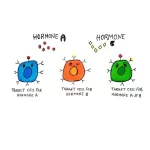

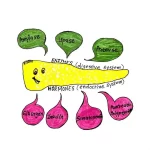
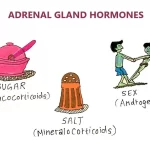



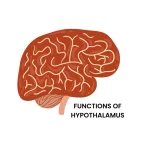
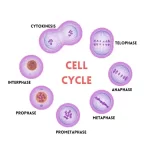
Leave a Reply